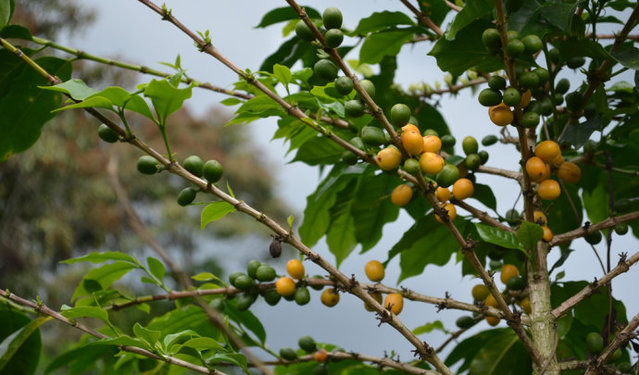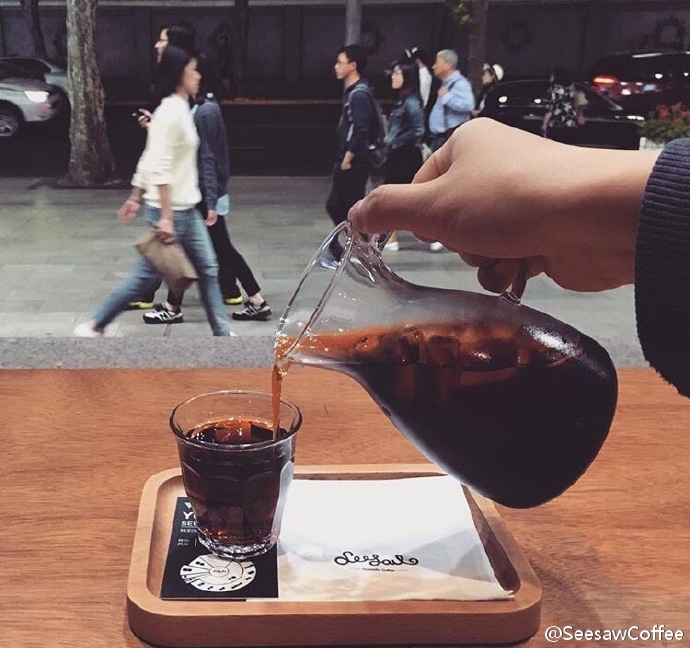SCAA interprets Typica and Bourbon of Fine Coffee
There are more than a hundred varieties of coffee, the more common coffee are: Arabica, outstanding personality, unique flavor, is the main force of boutique coffee, mainly used for coffee shop management and high-end coffee market supply; Robusta, rough flavor, high caffeine content, not boutique coffee, often used for instant coffee processing and Italian coffee mixed beans.
Ethiopian Typica and Yemeni Bourbon are the oldest coffee varieties known so far. Many Arabica variants have been derived after they were transplanted from the country of origin to Central and South America and Asia. The small seed coffee cultivated in Yunnan, China is one of the Typica variants, and there are Bourbon variants in other regions.
The above are Ethiopian native species, Rosa ripe beans (Viagra is not available here), Mantenin, Brazil bourbon.
SCAA about Typica and Bourbon:
Typica: the oldest native variety in Ethiopia, all Arabica are derived from Tibika. The top leaf of Tiebika is bronzed and the bean body is oval or thin in shape; the flavor is elegant, but the physique is weak, the disease resistance is poor and the fruit yield is less. Excellent manor beans such as the Blue Mountains of Jamaica, Manning of Sumatra and Kona of Hawaii all belong to Tibika.
Bourbon: a variant of the early (prehistoric coffee) Tibika transplanted to Yemen, the bean shape changed from a thin tip to a round body. It was named bourbon in 1715 after France transplanted round beans from Yemeni mocha to the island of Bourbon on the east coast of Africa (renamed Reunion after the French Revolution). Bourbon beans spread to Brazil and Central and South America in 1727, and the British transplanted Yemeni mochas to St. Helena Island (where Napoleon was later imprisoned) in 1732. Bourbon is the winner of the American boutique coffee cup test. The bronze color of the top leaf of Tibica is one of the features!

Important Notice :
前街咖啡 FrontStreet Coffee has moved to new addredd:
FrontStreet Coffee Address: 315,Donghua East Road,GuangZhou
Tel:020 38364473
- Prev

The practice of American coffee in today's coffee market
Some friends have questions about the practice of American coffee. Dilute a cup of Espresso with water. Is it American coffee? Uncle Dou's answer: it is indeed so. Let's first take a look at how American coffee appears and is named. American coffee was born after World War II, when the Americans ended the war in Europe, many troops came to southern Europe, they could not drink Espresso, so
- Next

Coffee shop sinks to third-and fourth-tier cities, does the sinking scene have a chance to transform the retail industry?
As the third space in people's life besides living and working, the value of cafes has long exceeded people's initial imagination. Under this background, a variety of characteristic cafes focusing on market segments have also begun to rise. Garage Coffee, 3W and mergers and acquisitions focus on Internet startups, and both Armani and Gucci have their own branded cafes. Just imagine.
Related
- Why can American refills for free? The difference between Americano and American drip pot coffee
- Being chased out of the rain in front of Starbucks?! Store: Sheltering from rain under umbrellas poses a safety hazard
- The white moonlight has changed?! Lucky launches "Big Winter Pear American"
- Hand-brewed coffee three-stage method, high-sweet and universal brewing method to share! What does the high sweet water level of hand-brewed coffee mean?
- What is the difference between raw, refined and full espresso coffee? How to extract espresso and taste good?
- A complete list of coffee bean names and their meanings! What is Yejia Shefi coffee? Where is Mantelin coffee?
- What grade does Arida Manor Kaduai coffee beans belong to? What treatment is Arida ASD slow anaerobic sun exposure?
- The milk tea cup becomes smaller?! Overlord Tea Girl launches a new "Return to Yunnan" series
- Accused of selling counterfeit and high-priced coffee beans! Well-known boutique coffee brand "Oukelao" bowed and apologized!
- How to make espresso dumplings? Can I eat coffee and glutinous rice balls together?

